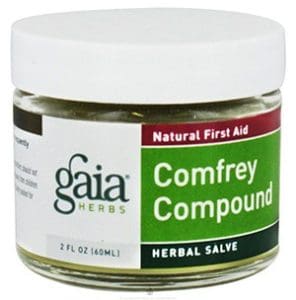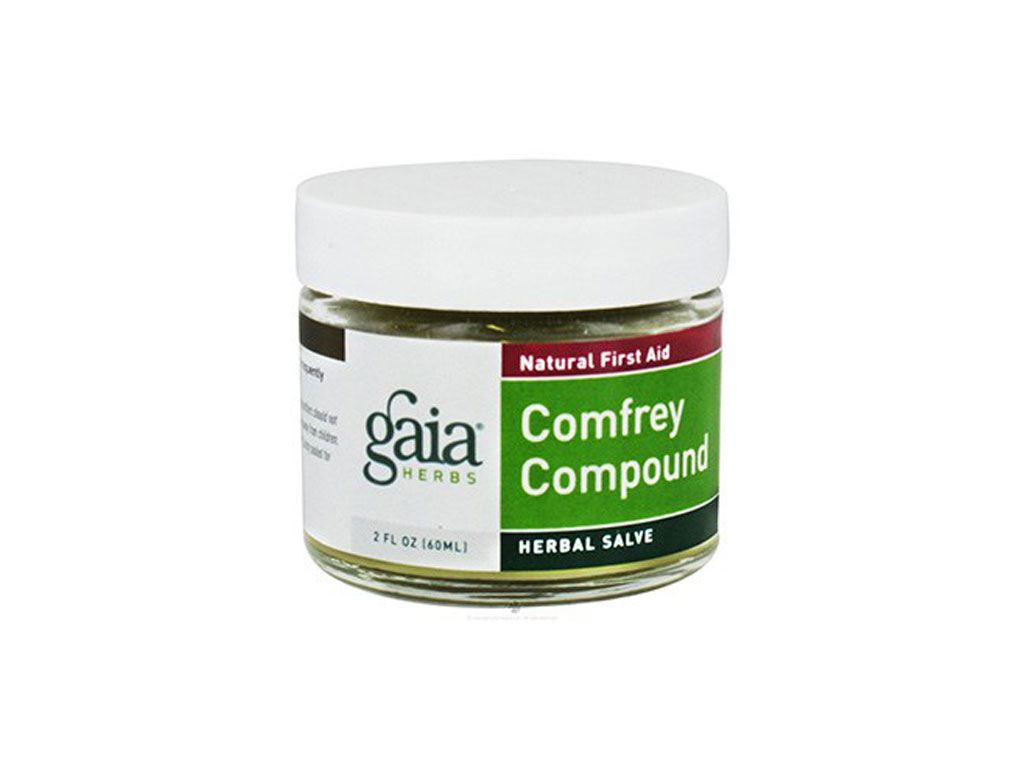 Aging. Sickness. Lack of energy. Death. Since the beginning of time, people have looked to the natural world for a cure to the problems of humanity. And within that history, comfrey has spanned the centuries.
Aging. Sickness. Lack of energy. Death. Since the beginning of time, people have looked to the natural world for a cure to the problems of humanity. And within that history, comfrey has spanned the centuries.
The comfrey plant has been used to treat a variety of ailments since 400 BC—and maybe even earlier. The Greeks and Romans used it. The Native Americans used it. Fast-forward to modern day, and comfrey still holds a space in some alternative medicine and wellness communities.
But what is it, what’s it good for, does it actually work and is it safe for general use? Consider this your quick guide to comfrey, one of the most controversial herbs hitting the mainstream.
What is comfrey?
Comfrey, a plant native to Asia and Europe, has long been used in folk and herbal medicines. It’s considered to have a number of healing properties and is known by a variety of names, including Ass Ear, Blackwort, Bruisewort, Boneset, Slippery Root, Knitback and Wallwort. If none of them sound familiar, don’t feel bad. Although it’s been around for ages, comfrey is just starting to gain visibility in the supplement world.
Despite the fact that the plant contains some toxic chemicals, people are turning to comfrey as the cure for a number of common ailments. The leaf, root and stem are harvested and used for a variety of medicinal purposes, though the roots contain the highest concentration of toxins.
What is comfrey used for?
Comfrey was once thought to be effective for treating everything from upset stomachs and ulcers to heavy menstrual periods, persistent coughs, bronchitis and cancer. It’s also been touted as a cure for sprains and strains, wounds, skin ulcers and fast bone repair. It was once boiled as a tea, though it’s since been regulated by the FDA for topical use only. But more on that later.
Even though comfrey today should only be used topically, it could still interact with certain medications since it can absorb into the skin. And even topical comfrey use could increase your risk of liver disease, so it’s important to not use it when taking other liver-harming medications (think: acetaminophen or lovastatin). It may also pose issues for other medications, so be sure to check with your doctor before applying comfrey to your skin.
Comfry benefits
Research documenting the actual benefits of comfrey has been scant. But speculation aside, it appears that this ancient plant could actually play a role in reducing inflammation and improving skin problems. That’s because comfrey contains high amounts of allantoin and mucilage, which have been shown to promote skin growth and have anti-inflammatory effects.
While the majority of uses—cancer, chest or joint pain, bruises, sore throat, gum disease, broken bones and wounds—might not have enough evidence behind them to warrant comfrey use, some research has shown that comfrey may be effective for things like back pain, osteoarthritis and sprains. And the plant’s proponents swear by its healing abilities, calling its reputation misinformed.
Comfrey side effects & dangers
Despite its purported healing properties, comfrey has been considered somewhat of a controversial plant, especially over the last few years. When taken orally, it may cause anything from liver and lung damage to cancer.
The FDA doesn’t typically regulate supplements in the same way as it does pharma drugs. That means that manufacturers don’t have to provide proof that their claims about a product are true. (That’s why honest reviews of supplements are so important.) However, when a supplement is discovered to bear negative or dangerous effects, the FDA steps in. While the agency hasn’t restricted sales of topical comfrey applications, it has siphoned off the use and sales of oral comfrey due to cases of liver damage and fatality.
Topical comfrey applications are sometimes still considered beneficial for soothing inflamed skin or massaging out pain. But these too carry a potential risk because of the potential for comfrey to be absorbed by the skin. Using it on broken skin or wounds could increase absorption of the chemicals into the skin—particularly if a lot of comfrey is applied.
That said, comfrey is considered “possibly safe” when applied topically (in small amounts to unbroken skin for less than 10 days). And that’s the only way it should ever be used.
Is comfrey safe for general use?
It’s generally not considered safe for pregnant or breastfeeding women, as well as for those with damaged or broken skin or liver disease. The potent toxins could produce effects opposite to their intended use, and when taken by mouth could result in liver damage or cancer formation.
Dietary, nutritional and sports supplements can be a powerful tool for optimizing to your health, but they should always be taken under a doctor’s care to be sure they won’t negatively affect any medications or health conditions.
There’s a lot of misinformation out there, but finding the best supplements doesn’t have to be difficult. Reading honest reviews is one way to separate fact from fiction. Check out reviews of top-rated supplements to find the ones that are right for your health and wellness needs—minus safety risk.
I’m not just a supplement analyst. I’m an extremely qualified one! I am a Certified Nutrition Coach (CNC) and actually received my certification directly from the National Academy of Sports Medicine. I am also a Nutrition & Wellness Consultant, certified by the American Fitness Professionals Association (AFPA).


